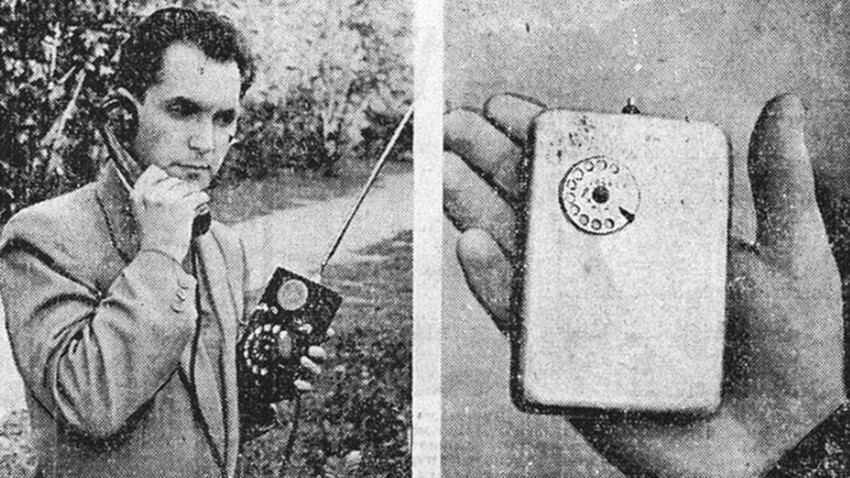There are a lot of secrets about him: who is Leonid Kupriyanovich?
The reason we can't find much information about him is that this talented engineer and inventor lived at a time when there was a lot of tension between the USSR and the USA. Fortunately, not everything remained under the cover of secrecy, thanks to patents and specialist journals.

Leonid Kupriyanovich was born on July 14, 1929. There are not many details about his biography, we only know that he graduated from Bauman Moscow State Technical University. The reason we can't find much information about him is that this talented engineer and inventor lived at a time when there was a lot of tension between the USSR and the USA. In fact, he was working at one of the secret scientific research institutes, and the information about him was in his secret classroom then as it is now, or has been lost forever. Fortunately, not everything remained under the cover of secrecy, thanks to patents and specialist journals.
Leonid Ivanovich Kupriyanovich (14 July 1929 – 1 January 1996) was a Soviet engineer from Moscow who is credited for early development of a mobile phone device.
From these sources, we know how Kupriyanovich's breakthrough devices came to be. As early as 1955 he had developed the first shortwave radio station model. This prototype weighed almost 2 kg, but the inventor, who was very fond of mountaineering, thought that this weight was too much. The next few years he was busy inventing a miniature version of the device and eventually succeeded, the model he produced weighed only 0.3 kg and had a range of 3 km. But this was only the beginning for Kupriyanovich, and his success encouraged him to continue working on this path.
A MOBILE PHONE EVERYONE CAN USE – LC1
Above is the story of how the first wireless telephone, which today would be called the mobile phone, was invented. The first version of the device weighed more than 3 kg and could operate at a range of up to 30 km from the nearest relay station. Also, the device had an internal battery with enough capacity to last all day (many cell phone users will say that this capacity is definitely above standard even today). However, these dimensions of the device did not satisfy Kupriyanovich's passion, so he began to work even harder on miniature versions of various prototypes and the development of their functions. And again it succeeded. The resulting mobile phone model was only 60g (slightly more than today's Mars chocolate) and had a range of 80km. It was small enough to fit in the hand and even had a small dial.
SO WHY DID KUPRIYANOVICH NOT BE FAMOUS?
The potential for success of Kupriyanovich's invention was huge. Building relay stations and the rise in popularity of cordless telephones could have changed the history of communications and indeed transformed the USSR as well. This is perhaps why the device failed and was not commercialized; eventually, cordless phones were used in a very limited number of government agencies. Kupriyanovich's story may be reminiscent of Jacek Karpiński, whose computer design projects were much better than his predecessors, but who did not receive government approval. Regardless of the reason the Soviet engineer's idea was rejected, Kupriyanovich turned his attention to the medical field and began working on a device that could help treat sleep disorders.
OUT OF COVERAGE?
Some might say that "someone who lived in the mid-20th century would be very surprised by today's technology." Maybe the average person would be surprised, but an engineer certainly wouldn't. Kupriyanovich's cordless phone is a perfect example of what kind of world we live in. We are now in a period of popularization and miniaturization rather than gigantic industrial revolutions. The GSM module is currently an absolutely essential electronic component. So much so that amateurs use this module almost like a toy in their projects. The same is true for products used in wireless communication. A miniature antenna that transmits millions of bits per second is an extremely inexpensive solution. Amplifiers, encoders, etc. electronic circuits can shrink down to a few millimeters. But although the popularity of electronic components has increased thanks to the mass production of these components, their capabilities are not as impressive as Kupriyanovich's device...
Although Kupriyanovich's invention did not become recognizable and remained a non-standard solution, he offered some new ideas. Above all, it opened up an incredible space. It is certain that many people are extremely pleased that today's mobile network operators are inspired by Kuptianovich's work, at least in this respect.
-------------------------------------
Why did the first Soviet mobile phone in 1957 never go into production?
https://www.rbth.com/lifestyle/336110-first-soviet-mobile-phone
